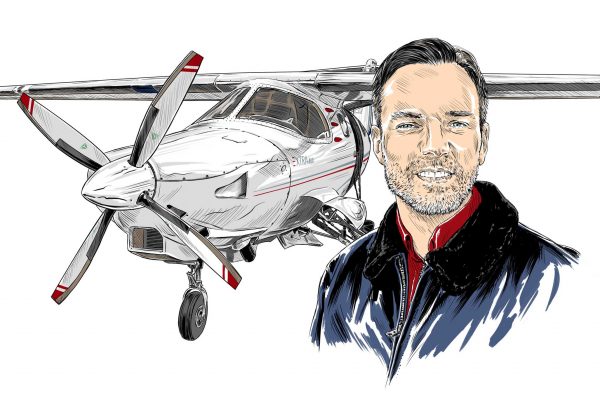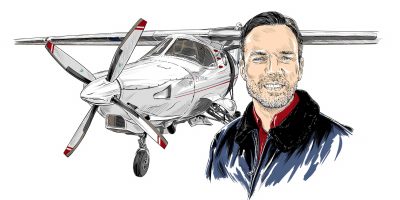Most private pilots will know that transporting people for money is not within the privileges of their licence, but whenever discussions that involve money changing hands come about, there is sometimes confusion as to what exactly is permitted.
It is worth separating two concepts – whether the pilot receives remuneration and whether the operation itself is ‘commercial’. The two often go together, but not always. For example, a commercial operation might be one in which a member of the public has paid someone else for a flight to take place. Just because the pilot may not receive any remuneration does not mean the operation is not commercial, nor does it entitle the pilot to fly the flight. Whoever the operator is they would still likely need an Air Operator’s Certificate (AOC).
On the other hand, there are scenarios in which a pilot might be paid by a private operator to fly a flight which is not considered commercial – the pilot would still need a commercial licence to be paid, but the operator (for example a private owner) may not need an AOC.
“The direct costs of the flight must be shared between all occupants of the aircraft, including the pilot”
The precise distinction between the two scenarios is beyond the scope of this article, but let’s look at what a PPL can actually do. Note, that while the EASA and ANO rules are similar, there are restrictions around using Permit to Fly aircraft when money is changing hands, which are also outside the scope here.
Receiving remuneration
The EASA Aircrew Regulation, and specifically Part-FCL, defines: ‘private pilot’ as: ‘a pilot who holds a licence which prohibits the piloting of aircraft in operations for which remuneration is given, with the exclusion of instruction or examination activities, as established in this Part’.
Now there is various detail around what instruction a PPL holder can conduct, but generally speaking instruction and examination are the only circumstances in which a PPL holder can receive remuneration.
Commercial Operations
It is also made clear in the detailed privileges of a PPL that they can only fly on non-commercial operations. ‘Commercial Operation’ is a term that came in with EASA. It has subsequently been removed from the latest version of the EASA Basic Regulation, but it still lives on in the EASA ruleset as the line between commercial and non-commercial operations. It has a sister definition ‘Commercial Air Transport’, which is ‘an aircraft operation to transport passengers, cargo or mail for remuneration or other valuable consideration’. If an operator wishes to do so, an AOC is required.
Now, there are some exceptions (derogations as known in EU law) in the EASA Air Operations regulation that allow certain GA activity to take place, which might otherwise be caught by the commercial or commercial air transport definitions. This means the flights can take place under EASA Part-NCO, as any other non-commercial flight would.
Cost sharing
The direct costs of the flight can be shared between all occupants of the aircraft, including the pilot, up to a maximum of six persons. When the EASA rules were published in 2014, the limit of persons onboard the aircraft went up from the previous four under the ANO, and there was no longer an explicit need for the pilot to pay a proportionate share or any restriction on the advertising of the flight. The CAA has extensive guidance covering ‘cost sharing’ and some web-based sharing platforms have signed up to an EASA charter that covers principles such as explaining to passengers that GA flying is not as safe as normal commercial air transport.
Introductory Flights, sailplane towing
Training organisations or other non-profit aeroclubs can use their aircraft for conducting ‘Introductory Flights’, sailplane towing, parachute dropping or aerobatic flights, without needing an AOC or having to comply with the Specialised Operations rules that commercial organisations would.
Introductory Flights were a concept from Europe – the idea being that aeroclubs could offer members of the public, on a limited basis, short leisure flights with the aim of promoting GA. The flights can be conducted by PPL holders, but they are not instructional, and the pilot cannot receive any remuneration for the flight, even if the organisation does. A similar principle applies for non-commercial parachute and glider clubs – payment for a flight may be taken by the organisation but if the pilot of the parachute or tow flight is just a PPL holder, they cannot personally receive any remuneration.
Competition flying
Competition flights or flying displays are allowed on the condition that the remuneration or any valuable consideration given for such flights is limited to recovery of direct costs and a proportionate contribution to annual costs, as well as prizes of no more than a value specified by the competent authority. In the UK, this would be specified by the CAA and the normal limit is £500. Effectively, receiving such a prize is the only actual ‘payment’ that a PPL holder can receive, beyond instruction as mentioned earlier.
Charity flights
Flights offered as prizes in a raffle or similar, on behalf of a charity, are permitted to be flown by PPLs, but any payment given for the flight must go to the charity concerned. Note the rules around this assume that the charity is not the operator of the flight – registered charities that are offering flights as an operator will likely have additional compliance considerations.
More info:
Caa.co.uk/ga
Caa.co.uk/cap1589 (cost sharing)




